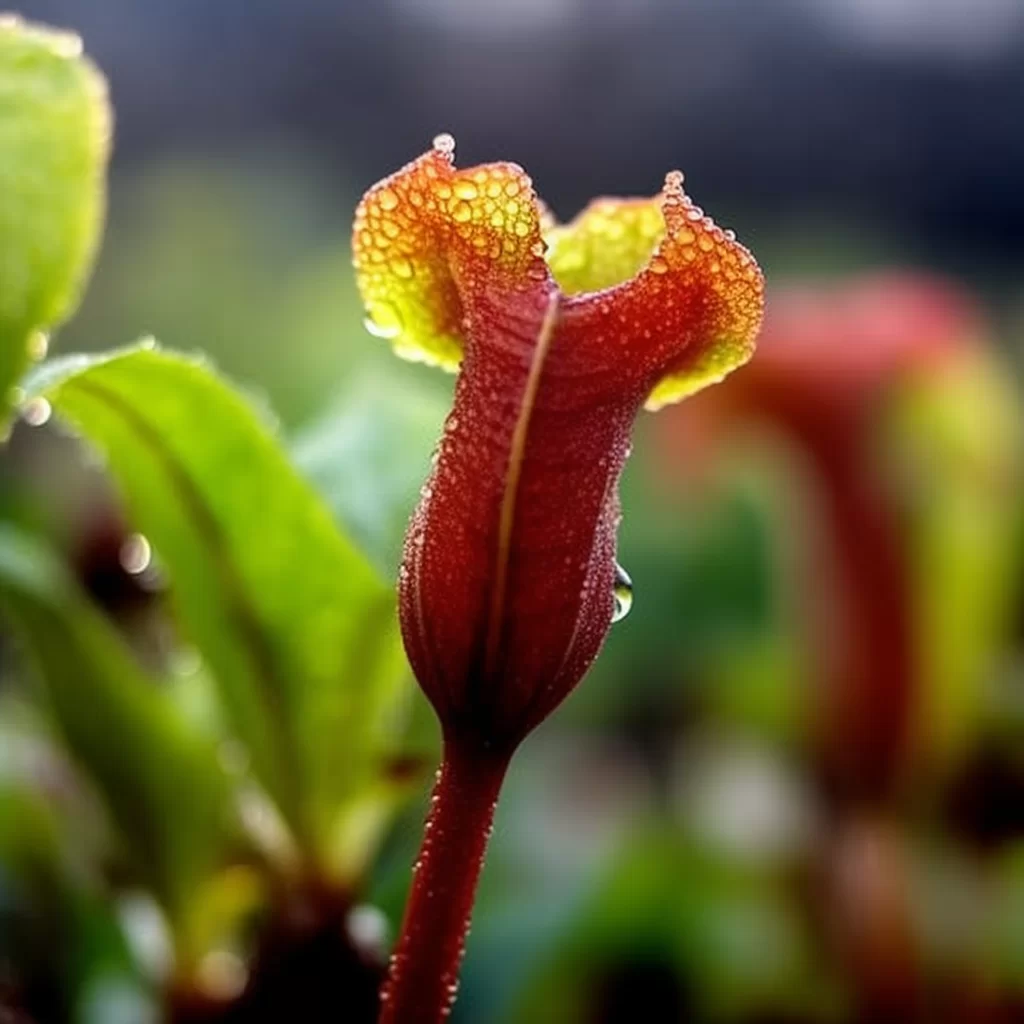Story of Day :
Contents
The Trumpet Pitcher Plant: Your Complete Guide and Care Tips
If you’re a gardener who loves unique and exotic plants, then the trumpet pitcher plant is probably on your list.
Also known as Sarracenia, this carnivorous plant is a sight to behold with its gorgeous trumpet-shaped leaves that lure insects inside them for digestion.
But before you get too excited about owning one of these beauties, there are some things you need to know about caring for them.
What is a Trumpet Pitcher Plant?
A trumpet pitcher plant is a type of carnivorous plant native to North America that has adapted to living in nutrient-poor soils by luring and digesting insects with its modified leaves.
The leaves are shaped like trumpets or pitchers that have nectar glands on their inner surface which attracts insects.
Types of Trumpet Pitcher Plants

- Sarracenia purpurea – The purple pitcher plant
- Sarracenia flava – The yellow pitcher plant
- Sarracenia leucophylla – The white-top pitcher plant
- Sarracenia psitticina – The parrot pitcher plant
- Sarracenia rubra -The sweet-scented pitchertank or red tube-like leaf shape
Caring for Your Trumpet Pitcher Plant: Tips You Need to Know
- Light: These plants thrive in bright light but not direct sunlight since it will cause the traps’ edges to burn.
You can place them near windows facing east or west where they can receive at least four hours of sunlight daily.</lil
- Soil: Trumpet pitcher plants need well-draining soil that is low in nutrients, like sphagnum moss.
Do not use regular potting soil since it can damage the plant’s tubular leaves.
- Water: These plants love moisture, but do not allow them to sit in standing water.
It’s best to water them from below by placing a tray of water under the pot.
- Fertilizer: Never fertilize your trumpet pitcher plant with regular plant food since they can’t tolerate high levels of nitrogen and other nutrients found in most fertilizers.
Instead, feed them with insects or fish flakes once a month during their growing season.
- Pests and Diseases: Carnivorous plants are generally hardy and resistant to pests and diseases.
However, they may occasionally suffer from aphids or spider mites due to their proximity to other houseplants or outdoor vegetation.

Propagation

The trumpet pitcher plant can be propagated by seed or dividing mature rhizomes (rootstocks).
Sow seeds on top of moist sphagnum moss and leave them in a cool place for about six weeks before moving them into brighter light conditions for germination.
Rhizomes should be divided during dormancy when you notice new growth emerging from the roots’ base
In Conclusion
Caring for your trumpet pitcher plant might seem daunting at first glance, but once you get the hang of it, these unique carnivorous plants are relatively easy to maintain! Keep these care tips in mind while enjoying your strikingly beautiful Sarracenia species!
